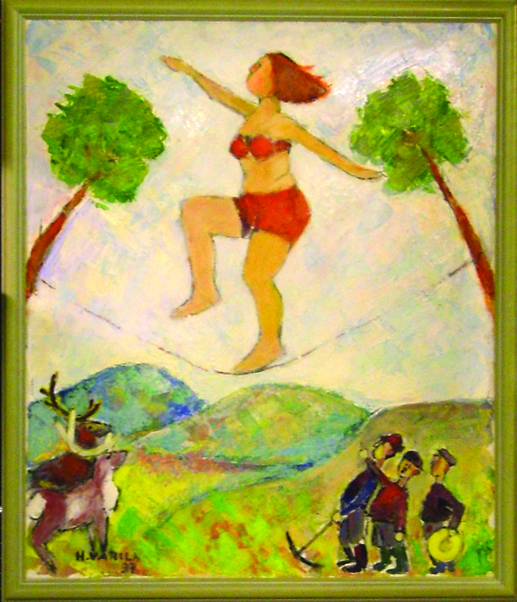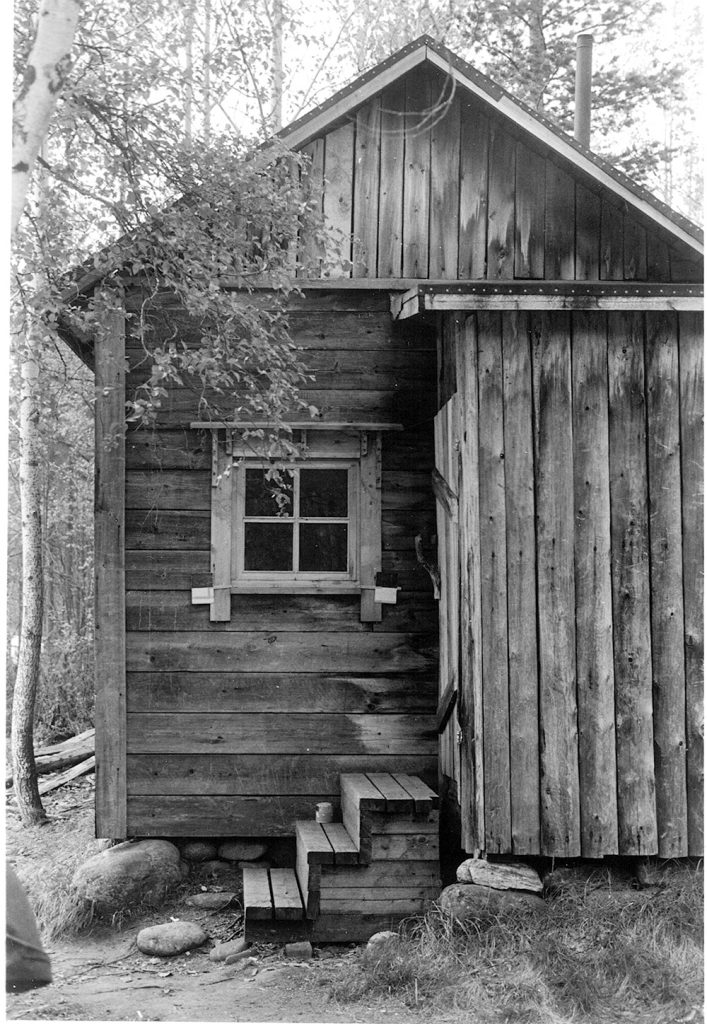- >
- Exhibitions
- >
- Online and travelling exhibitions
- >
- Women I
Though not so obvious in written documents, and despite the numerous stories about lucky and unlucky men, women have always been a part of gold history, all times and everywhere. Lapland is not an exception, so here you can find a few examples of different women throughout the Lappish gold history.
Ralla-Kaisa and Iso-Anni (Big-Anni) are names from the first gold rush to River Ivalojoki. Especially stories concerning Ralla-Kaisa have probably been exaggerated or embellished. Rasti Ralla-Kaisa was told to be the hostess in Björklund claim and the Kultala saloon, and a couple of later books mention her as a perky person who fooled around with the men. On the other hand, if you just fool around, you won’t be able to work as hostess or keep the saloon – being vigorous was probably just a good trait in those times in the middle of nowhere with many men around. Gold historian Seppo Partanen has also concluded that in real history Ralla-Kaisa might have been Sanna Hurmasti, a maid mentioned in prospector Frans Björklund’s worker list, who did not work until the end of summer like her colleague Greta Heikkilä did.
Iso-Anni (Anni the Big) worked as a servant to the police chief of Kultala and got her nickname for her size. According to the stories, she was worth her name: a strong, big and robust woman. One example that has been told is that when she and the chief argued, she occasionally crabbed him by the neck and the butt and threw him to the yard from the stairs.
Moppe aka Elvira Bono was a woman with a colourful personality and history. Sometimes she was called Petronella of River Ivalojoki due to her appearance. She was born in Sweden to an Italian circus director and his Swedish wife. The family moved from country to another with the circus and Moppe became the princess of the circus and an aerialist when she was only about 5 years old. She also became an excellent shooter, and those skills she needed later in her life. While visiting St. Petersburg, her father was killed as the revolution was raging around the city, and her mother and Moppe fled to Finland. Later, in 1918, Elvira participated in a trip to Petsamo, the new north-eastern part of Finland. Returning from Petsamo, she officially divorced her first husband and stayed in Inari where she met her husband-to-be Ivar Hallen. The marriage was unbound in 1927, but Moppe still decided to stay in Lapland. She worked as a cook in gold fields, in forestry fields and in Jäniskoski power plant worksite. She worked also, for example, for gold company Luttojoki Oy in their Ritakoski base. Moppe was always helpful and willing to support common happenings with her performing talents. She married her third and last husband in 1942, and the marriage lasted until her death in 1973. She stayed in the north for the rest of her life, enjoying the peaceful life with her husband.
- >
- Exhibitions
- >
- Online and travelling exhibitions
- >
- Women I


